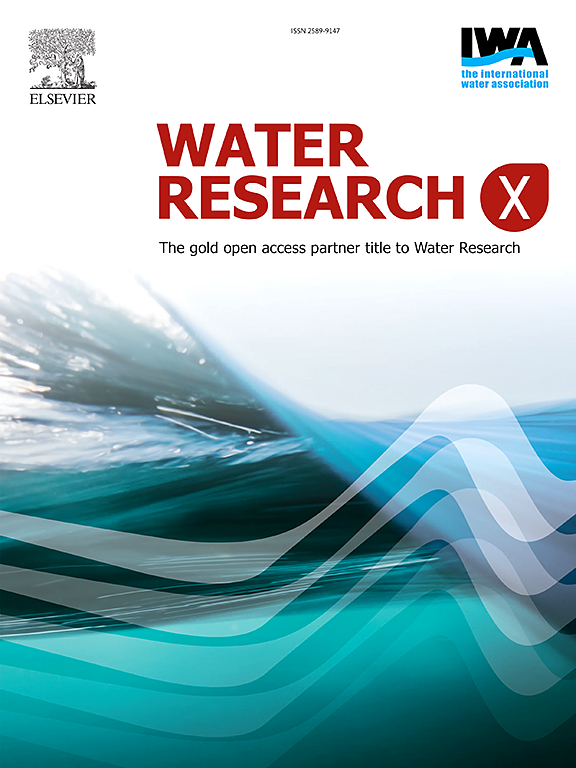Treatment of burned soil leachates by ultrafiltration coupled with coagulation: Insights into membrane fouling
IF 8.2
2区 环境科学与生态学
Q1 ENGINEERING, ENVIRONMENTAL
引用次数: 0
Abstract
This study evaluated the treatability of water leachates from wildfire-impacted soils using a coagulation-ultrafiltration process, aiming to better understand how post-fire changes affect membrane fouling in drinking water treatment. Soil samples were collected from one high burn severity and one low burn-severity site following the Cedar Creek Fire in Oregon, USA. The leachate from the one high severity site exhibited lower pH, turbidity, and dissolved organic carbon, and its dissolved organic matter (DOM) consisted of less aromatic compounds compared to the low-severity leachate. Filtration experiments revealed that, without pre-coagulation, the high-severity leachate caused less membrane fouling than the leachate from the low-severity sample. Pre-coagulation with aluminum chlorohydrate reduced fouling in both cases, though optimal dosages differed. For the low-severity leachate, a 30 mg/L dose improved DOM removal and minimized irreversible fouling, while for the high-severity leachate, effective control was observed at dosages up to 7.5 mg/L, with higher doses (30 mg/L) worsening fouling, potentially via metal-DOM complexes. While our controlled laboratory experiments provide valuable insights, we acknowledge that our lab experiments do not fully replicate field conditions. However, the unique characteristics of the leachate from our burned soil samples, indicate the need for further research to capture the complexities of post-wildfire water quality dynamics and refine treatment strategies for wildfire-impacted watersheds.

超滤+混凝法处理焚烧土壤渗滤液:膜污染研究
本研究利用混凝-超滤工艺评估了野火影响土壤中渗滤液的可处理性,旨在更好地了解火灾后的变化如何影响饮用水处理中的膜污染。在美国俄勒冈州雪松溪火灾后,从一个高烧伤严重程度和一个低烧伤严重程度的地点收集了土壤样本。与低污染渗滤液相比,高污染渗滤液的pH值、浊度和溶解有机碳均较低,溶解有机物(DOM)的芳香族化合物含量较少。过滤实验表明,在不进行预混凝的情况下,高浓度渗滤液对膜的污染要小于低浓度渗滤液。水合氯铝预混凝减少了两种情况下的污染,但最佳剂量不同。对于低浓度的渗滤液,30 mg/L的剂量提高了DOM的去除效果,最大限度地减少了不可逆污染,而对于高浓度的渗滤液,7.5 mg/L的剂量可以有效控制,更高剂量(30 mg/L)可能通过金属-DOM配合物使污染恶化。虽然我们的受控实验室实验提供了有价值的见解,但我们承认,我们的实验室实验并不能完全复制现场条件。然而,焚烧土壤样本中渗滤液的独特特征表明,需要进一步研究野火后水质动态的复杂性,并完善野火影响流域的处理策略。
本文章由计算机程序翻译,如有差异,请以英文原文为准。
求助全文
约1分钟内获得全文
求助全文
来源期刊

Water Research X
Environmental Science-Water Science and Technology
CiteScore
12.30
自引率
1.30%
发文量
19
期刊介绍:
Water Research X is a sister journal of Water Research, which follows a Gold Open Access model. It focuses on publishing concise, letter-style research papers, visionary perspectives and editorials, as well as mini-reviews on emerging topics. The Journal invites contributions from researchers worldwide on various aspects of the science and technology related to the human impact on the water cycle, water quality, and its global management.
 求助内容:
求助内容: 应助结果提醒方式:
应助结果提醒方式:


